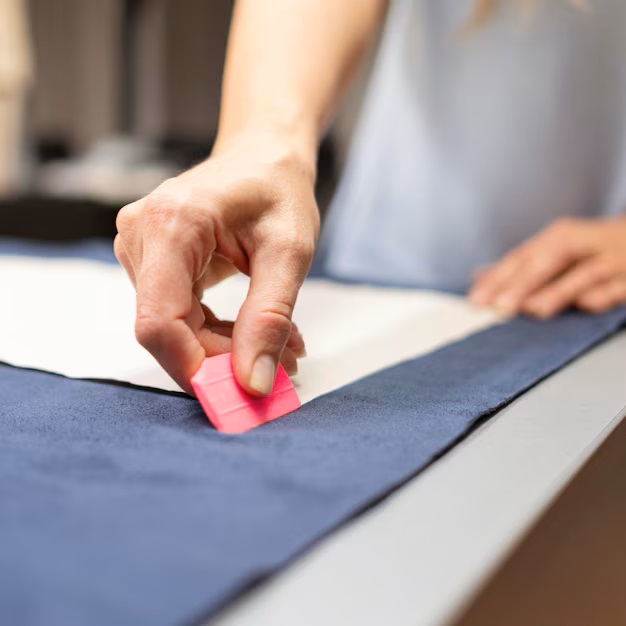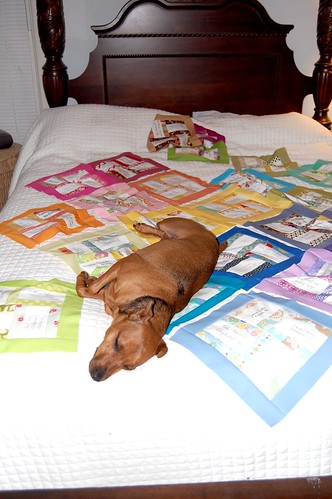Cutting Interfacing for Clare Sewalong Tips and Techniques for Perfect Results
Begin with precise measurements. Always measure the pattern pieces and transfer those dimensions directly to the stabilizer. A rotary cutter combined with a self-healing mat ensures clean edges, reducing the risk of fraying.
Choose the right type of stabilizer based on your fabric. For lightweight materials, use a fusible version to provide support without adding bulk. Heavier fabrics benefit from a sturdier stabilizer to maintain shape and structure.
Align the stabilizer on a flat surface to avoid distortion. Iron the fabric and stabilizer together if using a fusible type; this will create a strong bond. When working with multiple layers, cut each piece individually for accuracy.
Store any leftovers rolled up, avoiding creases that can lead to inconsistencies in future projects. Always label your stock for easy identification of types and weights. Attention to these details will yield polished results in your sewing endeavors.
Understanding Different Types of Interfacing
Choosing the right backing material is crucial for achieving the desired structure in your sewing projects. Here’s a breakdown of the main varieties along with their specific uses.
Types of Backing Materials
- Woven: This type provides stability while allowing some flexibility. Ideal for collars, cuffs, and button plackets. Look for it in both fusible and non-fusible options.
- Knit: Stretchy and soft, it’s suitable for knits or fabrics with a stretch. Use it on hems or areas that require movement.
- Non-Woven: Often made from synthetic fibers, it’s lightweight and easy to trim. Good for lighter fabrics like silk or cotton. Best used when minimal bulk is desired.
Fusible vs. Non-Fusible
- Fusible: Adheres to the fabric when heat is applied. Excellent for projects requiring a stiff finish, such as bags or structured garments.
- Non-Fusible: Requires manual stitching or tacking. Preferred for items where the interfacing needs to be removable or when working with delicate fabrics.
Select the appropriate backing material based on the project needs and fabric characteristics for optimal results.
Preparing Your Fabric and Interfacing for Cutting
Begin with prewashing your fabric, following the manufacturer’s instructions. This removes any sizing and shrinks the material, preventing future distortions.
Iron your fabric thoroughly before laying it out for cutting. Ensure it is smooth to avoid imperfections in your project.
Choose an appropriate interfacing type based on your primary fabric. For woven materials, opt for fusible interfacing; for knits, consider non-fusible options.
Align the grainlines of your main fabric with those of the interfacing. This alignment is critical for maintaining the structure and drape of the final product.
Utilize weights or pins to secure your fabric and stabilizer to the cutting surface. Avoid stretching the fabric while doing this.
Cut a sample swatch of both the fabric and interfacing. Test the fusibility on a small area to validate adhesion and ensure compatibility.
Check for any visible flaws in both materials before proceeding. Address any issues to maintain the quality of your finished piece.
Selecting the Right Tools for Cutting Interfacing
Use a rotary cutter for smooth, precise lines. This tool is especially effective on thicker materials. Pair it with a self-healing cutting mat to extend its lifespan and protect your work surface.
Scissors are another option; invest in high-quality, sharp shears designed for fabric. Ensure they are kept well-maintained to avoid fraying edges.
For intricate shapes, opt for embroidery scissors. Their small size and pointed tips facilitate detailed cutting.
A clear, acrylic ruler assists in measuring and aligning cuts accurately. Ensure it has marked measurements for convenience.
Consider using a design board when preparing your pieces. This allows for easy pinning and prevents distortions during cutting.
For fusible materials, a heat-activated blade can enhance precision. This type of tool bonds edges effectively while you cut.
Finally, keep a cutting knife handy for trimming away excess bulk. This adds finesse to your finished product.
Step-by-Step Instructions for Accurate Cutting
Utilize a sharp rotary cutter paired with a cutting mat for precision. Ensure your blade is sharp to prevent jagged edges.
Preparation
- Choose the correct type of stabilizer based on your project needs.
- Prewash and iron fabrics to eliminate shrinkage.
- Layout stabilizer flat on a clean, dry surface.
Measurement & Marking
- Measure the necessary dimensions using a clear ruler, adding seam allowances.
- Use fabric chalk or a removable marker to outline cutting lines on the stabilizer.
- Double-check your measurements before proceeding to cut.
Align the ruler along the marked lines, steadying it with one hand, and hold the cutter with the other. Maintain an even pressure while slicing through the material.
- Cut in one smooth motion for best results.
- Avoid forcing the cutter; if resistance is felt, adjust the angle or reposition.
After cutting, check for any uneven edges and trim as necessary. Store any leftover pieces flat and away from sunlight to prevent distortion.
Avoiding Common Mistakes When Cutting Interfacing
To ensure accuracy, always use a cutting mat and rotary cutter. This setup provides a stable surface and precise control over your measurements.
Double-check fabric grainlines. Align your reinforcement material according to the direction of the fabric weave, which guarantees stability and minimizes distortion.
Be cautious of the preshrinking process. If the interfacing is not prepped beforehand, it may react poorly once exposed to heat or moisture.
Utilize weights or fabric clips instead of pins while securing layers. Pins can leave marks or distort the fabric, affecting the final outcome.
Always follow the manufacturer’s recommendations regarding cutting dimensions. Erroneous measurements can lead to fitting issues or inadequate support.
For reference, observe the following table that outlines common dimensions and types:
| Type | Recommended Width | Common Uses |
|---|---|---|
| Lightweight | 10-12 inches | Shirts, blouses |
| Medium-weight | 12-16 inches | Jackets, skirts |
| Heavyweight | 16-20 inches | Pants, structured bags |
Lastly, always keep a dedicated pair of sharp scissors for slashing through. Dull blades can produce frayed edges, leading to an unprofessional finish.
Tips for Storing Leftover Interfacing
Store offcuts flat to prevent creasing. Rolling them can cause wrinkles that are hard to remove later. Use clear plastic bins or drawers for visibility and easy access.
Label each piece with dimensions and type to avoid confusion when you need them again. This will save time and reduce waste.
Keep interfacing away from direct sunlight to prevent fading or degradation. A cool, dry place is ideal for storage.
Consider using file folders or binder clips to organize smaller pieces together. This method allows you to sort by type or weight without taking up much space.
Every few months, check your stash for any unusable or outdated materials. Discard anything that has lost its adhesive properties or is damaged. This keeps your collection manageable and ensures quality for future projects.
Q&A: Clare sewalong cutting interfacing
What makes the Clare Coat by Closet Core a strong choice for anyone interested in sewing a coat with structured tailoring and warmth?
The Clare Coat by Closet Core is a stylish, approachable project for intermediate sewists looking to try coat making. With options like View B, which features a funnel collar and raglan sleeves, and the ability to interline with Thinsulate for extra insulation, it results in a polished winter coat. Its clean, modern silhouette and clear instructions, especially in the Clare Coat sewalong, guide makers through everything from cutting out separate pieces to assembling the front.
How does weft interfacing enhance the finish and durability when working with wool coat fabric during the coat making process?
Weft interfacing provides stability while maintaining the thickness and drape of the wool, making it ideal for use in tailored outerwear like the Clare Coat. When you properly fuse it to the outer shell pieces—especially using tools like a clapper and a prym ironing blanket—you get smooth seams and reinforced structure, which are essential for supporting features like a welt pocket or structured collar.
Why might a sewist choose to interface the whole coat or use woven interfacing on specific coat fabric areas, especially around the waist and hips?
Choosing to interface the whole coat with woven interfacing or weft fusible adds body and prevents stretching in high-stress areas, like the waist and hips. This approach is particularly helpful when working with softer coat fabric that might lose shape over time. It also ensures that details like the a-line shape of the coat or bound buttonholes hold their form throughout wear.
What prep work is needed before beginning to make the coat, and how does it affect the outcome of a project like the Clare Coat – Guthrie version in beautiful wool?
Essential prep work includes cutting the lining, marking all interfacing pieces, and organizing the fabric pieces with labels. For a project like the Clare Coat – Guthrie, this foundation ensures smooth progress when assembling the body and achieving precise alignment at seams like the back raglan seam. Using quality coat fabric and properly fusing the interfacing sets up a high-end result and minimizes issues during construction.
How does the Clare Coat by Closet Core Patterns support first-time coat makers in assembling the body with confidence and structure?
The Clare Coat by Closet Core Patterns includes detailed instructions for assembling the body, with a strong emphasis on preparation and construction order. By working from pieces cut and interfaced, sewists can create a clean silhouette, and tools like a clapper and prym ironing blanket help achieve crisp seams. For those making a coat for the first time, the pattern’s guidance through each area of interfacing and the option to baste components before final stitching builds confidence and accuracy.
Why is a coat with Thinsulate such a popular choice in patterns like the Clare Coat, especially for those looking to create a warm, lined coat?
Adding Thinsulate insulation transforms the Clare Coat into a fully functional new winter coat, making it suitable for colder climates. In patterns like the Clare Coat, which is designed with a structured shape and room for layering, Thinsulate provides warmth without bulk. When sewing this coat, including Thinsulate in the body of the coat or along the coat back ensures both comfort and a polished finish.
What considerations should be taken when selecting a size 8 or size 10 while using Closet Case sewing patterns, especially when working with a jumper or thicker layers?
When using Closet Case sewing patterns like the Clare Coat, choosing between size 8 and size 10 depends on the desired fit and whether it will be worn over a jumper or multiple lot of layers. If layering is key, sizing up to fitted the size 10 can ensure ease of movement and comfort. Accurate measurement and considering ease are essential before finalizing pieces cut.
Why do many sewists decided to interface the whole outer layer of the coat i used, and how does this affect the outcome of a coat like the Clare Coat?
Many sewists decided to interface the whole outer layer, especially when working with softer outer shell pieces, to add structure and longevity to the lined coat. In a coat like the Clare Coat, this technique supports tailored elements such as the collar, front facings, and hem. It also minimizes distortion and enhances drape, especially when using a pressing cloth and used a prym ironing blanket during pressing stages.
How does the process of assembling body sections in the Patterns Clare Coat demonstrate the structured design typical of Case Patterns?
The method for assembling body pieces in the Patterns Clare Coat follows a clear and intentional construction path, highlighting the quality of Case Patterns. With detailed instructions that include which pieces need to be cut, how interfacing adds support, and why precision is key, the pattern ensures each step builds toward a polished, professional result, especially important when we’ll be sewing thicker fabrics.
Why do experienced sewists say a clapper helps and emphasize fit when they fitted the size 8 for a project like the Clare Coat, particularly in View B features?
Using a clapper helps flatten bulky seams and secure crisp edges, which is vital for achieving the sleek lines and collar structure in View B features of the Clare Coat. Many who fitted the size 8 find that thoughtful pressing and tailoring make a big difference, especially since the pattern suggests using heavier fabrics. Far as coats go, this project teaches useful things about sewing, even for those familiar with free patterns.



